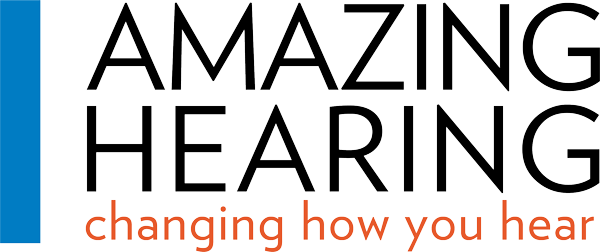What to Expect at a Hearing Test
About 15.5% of American adults 18 years and over, or 40 million people, have trouble hearing according to the most recent data from the National Health Interview Survey (NHIS), a household survey administered by the Centers for Disease Control and Prevention.
The most common signs of early hearing loss include:
- Frequently asking people to repeat themselves
- Needing to turn the TV up louder and louder
- Having difficulty with a conversation over the phone
- Difficulty hearing in environments with a lot of background noise
These are some of the beginning signs of hearing loss. When you start to suffer from hearing loss, it forces your brain to work harder in order to fill in the gaps to try and make sense of what you are hearing. When you add background noise into the mix, your brain is trying to figure out the cues that you are missing, while trying to reduce the background noise and follow along with the conversation between three or four people, trying to make sense based on the context.
This is where communication starts to break down and where those with hearing loss face more issues in those types of environments. If you find that these are some of the signs that you are noticing, then you have made the right decision to have a hearing test and hearing aid evaluation.
What happens during a hearing test?
Hearing tests are easy to take, and they will provide you with immediate results so you can take action to improve your hearing today. A hearing test is the most efficient and reliable way to find out whether you or a loved one is suffering from hearing loss.
During the beginning of your hearing test, your audiologist will speak to you about your medical history, hearing concerns, and lifestyle to help you get the best professional recommendations possible following the assessment in order to meet your individual needs and preferences.
After that, the physical ear examination will take place. Your ears will be examined to make sure that there are no signs of wax buildup. If there is wax in your ears, the audiologist will remove the wax in order to get an accurate hearing evaluation.

Then, an in-depth hearing aid assessment will take place, which will include a series of different tests on speech, words, tones, and pitches.
Your results will be immediately available following the hearing test, and they will be reviewed with you in detail so you can understand your own level of hearing loss. Your
audiologist will then provide you with some professional recommendations while also taking into consideration your hearing aid size and color preferences, your listening lifestyle, and your budget.
Lastly, your audiologist will conduct a live hearing aid demonstration, so you are able to experience the benefits of a hearing device and regain your sense of hearing and confidence.
What happens after a hearing test and you purchase hearing aids?
If you decide to go with hearing aids, then after your test your audiologist will take impressions of your ears if you need custom ear molds. Then they will schedule a Fitting appointment with you.
At your hearing aid fitting, the audiologist will check the overall comfort, fit, and aesthetic of your hearing aids. They will set them at a comfortable volume and verify their sound quality. They will take a REM (Real Ear Measurement) to help the performance of the hearing aids. They will also help instruct you on the use and care of your hearing aids, as well as establish a schedule to help get you started with wearing them.
REAL Ear Measurement (REM)
Real Ear Measurement is the objective measurement of a hearing aid’s performance while in the patient’s ear listening to live speech. The purpose of the test is to measure how the hearing aid works in real time in the patient’s own ear canal. The test is an important gauge for the audiologist to accurately assess how the hearing aid is doing for that individual patient. Less than 20 percent of hearing aids fit nationwide use REM. At Amazing Hearing, 100% of all aids are fit with this best practices standard.
Many times, our adjustments are the difference between not wearing, or only tolerating your hearing aids – to LOVING them, and wearing them successfully.
Real Ear Measurements allow us to place a small microphone in your ear canal between the end of the hearing aid and your ear drum. We play a speech passage through a speaker and measure your hearing aid’s performance. We don’t use standardized measurements, but instead by using your own ears performance, we can exactly set your hearing aids for you.
The audiologist will schedule you for a second and third In-Trial follow-up appointment.
At these follow-up appointments, you will get the opportunity to speak with your audiologist about your overall experience with your hearing aid’s. You will explain any difficulties different listening situations, and discuss whether or not your hearing objectives have been accomplished.
Your audiologist will then fine-tune your hearing aids to help improve your experience if necessary. Your audiologist will provide you with education and counselling if you need it, and they will also offer future service and counselling as required to make sure that your hearing aids continue to meet your goals and objectives.
Amazing Hearing
There’s no reason to live with untreated hearing loss. Schedule a hearing test with Amazing Hearing, so you can get help as soon as possible. We provide comprehensive hearing health services, from tests to hearing aid fittings. Contact us today to learn more!



